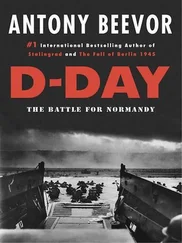1 ...7 8 9 11 12 13 ...27 A nine-or twelve-pound cannonball fired at high velocity was a terrifying thing: the momentum created by its speed and weight made it capable of ploughing through massed ranks of men, tightly packed together as they were according to the tactics of the day. Several are the stories of men putting out a foot to halt what they thought was a slowly rolling, spent cannonball only to discover that it still had the ability to smash through bone and flesh. Even after a ball had bounced several times, each time roughly half the distance of the last, depending on how hard the ground was, it was still a lethal weapon. Yet unlike howitzers, cannonballs needed a straight trajectory, and with many of Wellington’s men hidden, the Grand Battery was denied one.
When, however, as happened to the 27th (Inniskilling) Regiment, the French artillery could directly pound an Anglo-Allied unit, the result was utter carnage. John Kincaid, one of the officers of the 95th Regiment stationed nearby in what, because it had been used to extract gravel, was called ‘the Sandpit’, wrote of how ‘The Twenty-Seventh regiment were lying literally dead, in square, a few yards behind us. I had never yet heard of a battle in which everybody was killed; but this seems likely to be an exception, as all were going by turns.’
By 1.30 p.m. Napoleon knew for certain that the black-clad troops who were emerging in ever greater numbers from the woods on the east of the battlefield were not, as he had initially hoped, Grouchy’s corps come to win the day by staving in Wellington’s left flank, but rather von Bülow’s Prussians intent on doing the same thing to his own right flank. Since he did not know how many Prussians would be emanating from that theatre of operations, and presumably hoped that Grouchy had bottled up a large proportion of Blücher’s force, he sent off only part of his cavalry reserve — under Generals Domon, Subervie and Lobau — to observe the situation.
It was now clear that time was no longer on his side, so at 1.30 p.m. the Emperor launched what he hoped would be an invincible infantry assault, as large an attack as any of the Napoleonic Wars. D’Erlon’s corps numbered around 16,000 men, over a quarter of Napoleon’s entire army at Waterloo; a tremendous force to launch at the centre-left of the Anglo-Allied line. Had it broken through there can be little doubt that Napoleon would have won the day, since with the forest at his back Wellington would have had no room to manoeuvre his army together as a single unit again. Halting and reversing the mass of men as they marched towards Wellington’s line, their drums beating and flags flying, was therefore of the utmost importance.
The uneven ground which the corps had to traverse, about 1,300 yards of it, moreover in places allowed some cover to the French troops. To walk the ground of d’Erlon’s advance today takes some fifteen to twenty minutes, even without the six-foot-high corn and the mud underfoot that slowed his troops then. In 1815 it must have taken just as long, if not longer, an excruciating time to advance under cannon-fire.
There is still much debate among historians as to the exact formation that d’Erlon chose for his four divisions to press home the attack. It has given rise to the accusation that the French commanders, by choosing a column rather than a line formation, were myopic and clumsy. This cannot necessarily be levelled at Napoleon himself, who could not be expected to have attended to such a detail in person, so much as at Ney as the battlefield commander and d’Erlon as the corps commander, and possibly also the four divisional commanders — Donzelot, Quiot, Marcognet and Durutte. D’Erlon’s corps was protected by cavalry on both its flanks, but the problem would come from the centre.
It appears from the account we have from one of the captains who took part in the assault, a veteran named Duthilt, that the divisions attacked not in single columns but divisional columns formed up in battalions of three ranks each with 130 or so men in each, eight groups of three ranks each per division. A new and unfamiliar formation, it would doubtless have been greatly distorted during the march forward, but it was probably better in terms of firepower than the formations so often turned back in the Peninsular War, in which d’Erlon, Ney, Soult and several of the divisional commanders had all fought. Yet it is not by any means certain that this was in fact the formation adopted.
Eighty years ago, the historian Captain A.F. Becke put forward the intriguing theory that an order was garbled from ‘ colonne de battalion par divisions’ into ‘ colonne de division par battailon’, and that this perhaps accounted for what happened; but since the mass column had been used in the battles of Friedland and Wagram it is possible that d’Erlon actually intended to attack in old-fashioned column. Certainly, the tactics of the Napoleonic Wars altered very little during their course. Whatever the formation ultimately chosen, however, it was disastrous. British infantry had been formed in line to fight advancing French columns for six years in the Peninsula, and they had rarely lost. ‘Napoleon did not manoeuvre at all,’said Wellington after Waterloo. ‘He just moved forward in the old style, in columns, and was driven off in the old style.’ 1
D’Erlon managed some initial successes: Durutte succeeded in capturing the hamlet of Papelotte, and Donzelot diverted a brigade of his division to try to seize La Haye Sainte from the King’s German Legion, taking its garden and orchard. A German infantry battalion that was sent to support Major Georg Baring in that very isolated position was badly cut up by a cuirassiers brigade on d’Erlon’s left flank. If Donzelot had been supported by enough artillery to blow a breach in the wall of La Haye Sainte, or to set the place on fire, it might have been disastrous for Wellington’s centre at that still early stage of the battle, but this basic act of forethought had not been carried out, as with so many others in the area of inter-arm communication on the French side.
One of the Frenchmen marching towards the British lines in d’Erlon’s corps was Captain Duthilt, who had fought since the Revolutionary Wars and therefore had twenty-two years’ experience of leading men in battle. He was concerned about several factors in the attack, massive though it was. The strength of Wellington’s defences, the muddiness underfoot, the strange formation chosen for the corps by the generals, and the way in which the men’s zealotry had been built up too early, all left him worried. 2‘This rush and enthusiasm were becoming too disastrous,’ the veteran recorded in his memoirs, admittedly with hindsight, ‘in that the soldier still had a long march to make before meeting the enemy, and was soon tired out by the difficulty of manoeuvring on this heavy churned up soil, which ripped off gaiter straps and even lost shoes … there was soon disorder in the ranks, above all as the head of the column came within range of enemy fire.’ 3
D’Erlon’s men must be given credit for reaching the very crest of the slope on the Anglo-Allied left-centre, despite the heavy and accurate fire they were soaking up as they marched up the low ridge. To make matters worse for them there was a thick, six-foot-high hedge at the top, but in places they passed both that and the sunken road behind. When they reached von Bijlandt’s Dutch-Belgian brigade it broke and ran, fleeing past Major-General Sir Thomas Picton’s 5th Division. Although the brigade has occasionally been excoriated for cowardice, it ought to be recalled that it had been badly mauled at Quatre Bras, was therefore severely under-strength, had already withstood ninety minutes’ cannonading at short range, and above all was not made up of men whose hearts were in the fight politically, ideologically or racially. If d’Erlon had been capable of consolidating his position on the crest of the ridge he could have turned Wellington’s flank. A crisis of the battle was at hand.
Читать дальше
Конец ознакомительного отрывка
Купить книгу











